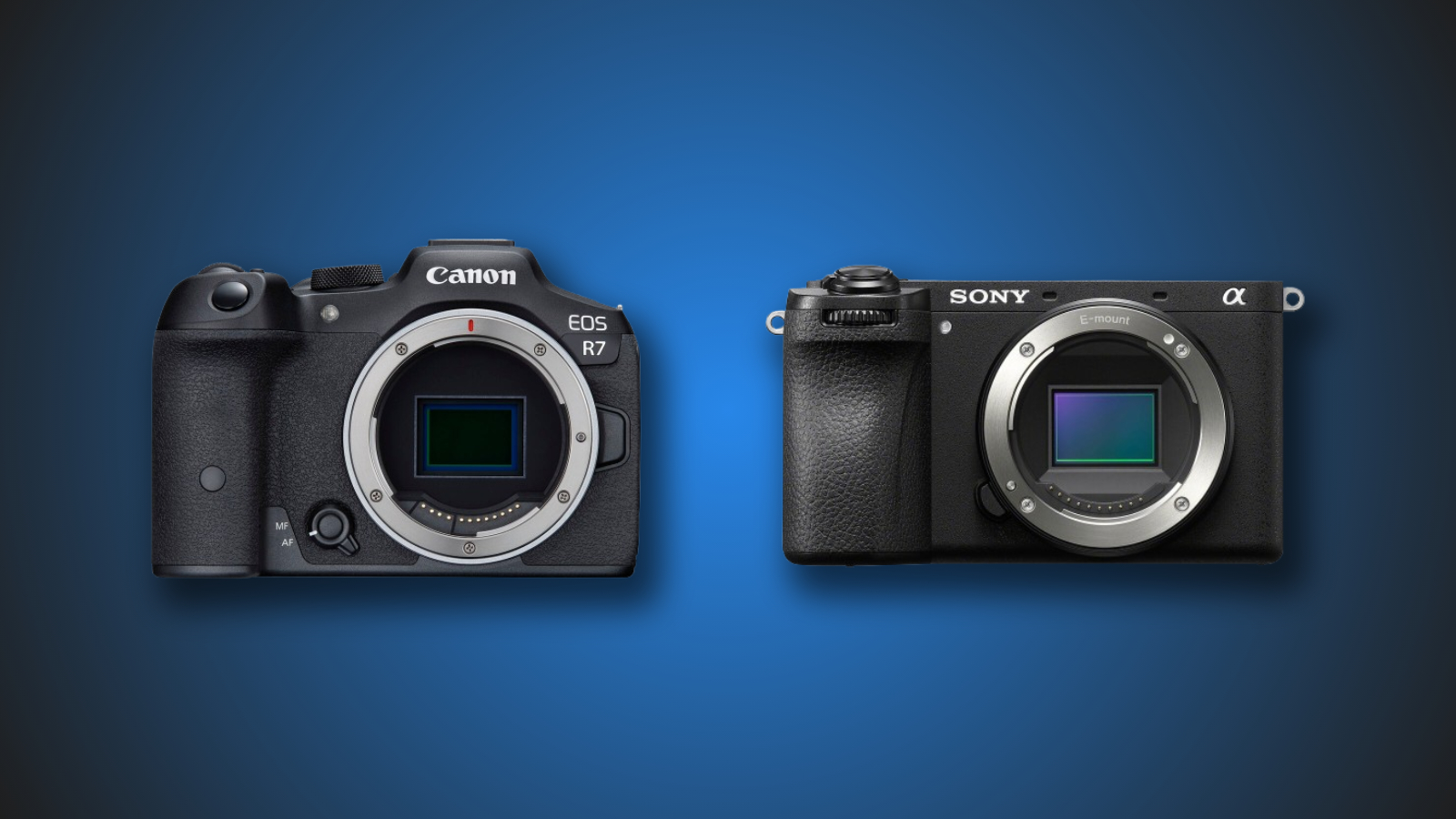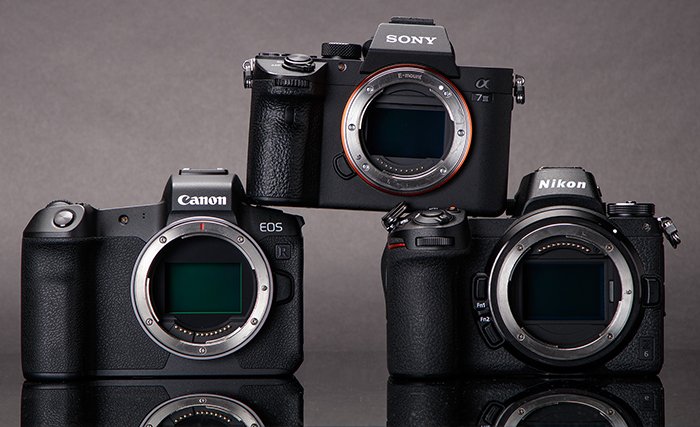
Canon EOS R3 versus Sony a9 II What a time to be a photographer, especially one who has their eyes and lenses set on photographing fast action. We live in an age where even compact cameras have insane autofocus and burst speeds, and many midrange full-frame mirrorless cameras out there can capture bursts of images that put the sports DSLRs of yore to shame.
Enter the EOS R3. It's the first truly action-focused mirrorless camera we've yet seen from Canon, and it looks like they've thrown an awful lot into it. With an all-new 24MP stacked CMOS sensor and sophisticated autofocus algorithms, it's only natural to take a look at how it compares to Sony's a9 Mark II. The spec similarities in resolution, autofocus capability and speed are uncanny.
But these days, competition between manufacturers isn't just about specs (regardless of how much their marketing departments want you to think so). Instead it's a combination of technical capability and the experience of using the device that's most important (as well as professional support for these particular options). So that's what we'll take a look at here: how these two high-end sports-shooting mirrorless cameras stack up in the hand, as well as on paper.
Body and controls
Starting with the 'in the hand' bit, let's take a look at the outward designs and controls of these cameras. Given its dual-grip design and enormous battery, it's no surprise that the EOS R3 is the larger camera (though note the above image comparison is not to scale). The EOS R3 is also appreciably heavier, tipping the scales at 1015g (2. 24 lb) to the a9 II's 678g (1. 49 lb), though if you attach a battery grip to the a9 II, the total weight comes in around a much more comparable 1050g (2. 31 lb). We suspect the main reason for wanting to do this will be for portrait orientation handling, as we'll see when we discuss battery life later in the article.
Both cameras come with triple command dials; one near the shutter button for your index finger, and two for your thumb to operate on the top and rear plates of the cameras. They diverge there, though, with the Sony giving you a traditional mode dial and direct dial access to drive and autofocus modes. On the Canon, you must press the 'Mode' button and then rotate a command dial to change your PASM shooting modes, and for drive and AF controls, you press and hold a button on the top left shoulder of the camera while turning the command dials. Overall, this approach is likely to be familiar for experienced users of Canon's high-end camera bodies.
Another notable difference is Canon's provision of an AF 'Smart Controller' embedded into the EOS R3's AF-ON button. Also, the Canon is far easier to switch between stills and video shooting due to the dedicated toggle seen next to that AF Smart Controller, and though both cameras are highly customizable, the Sony has the edge in this respect, allowing you to assign virtually any function to virtually any button on the camera.
Displays and viewfinders
One area in which we find the EOS R3 has a decisive edge over the Sony a9 II is in terms of displays. Assuming, that is, that you're a fan of fully-articulating designs, shown here on the Canon, versus the tilting-only design of the Sony.
Not only is the Canon's rear display slightly bigger than the Sony's at 3. 2" compared to 3", but it's much higher-resolution, with 4. 15M dots compared to 1. 44M. The a9 II's touchscreen interface is also much more basic and less responsive than the R3. It's really only useful as a means of moving your AF area around and initiating AF tracking in video, whereas you can control almost everything on the R3 using just the touchscreen if you so desire.
The Canon's viewfinder is fractionally smaller in terms of magnification than the a9 II, but like the rear screen, has noticeably higher resolution with 5. 76M dots compared to 3. 69M. Plus, Canon's included a trick 'OVF Simulation' feature that takes full advantage of the wide dynamic range the electronic viewfinder panel is capable of, and it provides a much more transparent shooting experience than the Sony does.
Eye Control Autofocus and other autofocus controls
We would be remiss if we didn't give a shout out to the return of Canon's Eye Control Autofocus, which is a truly useful and intuitive method of controlling your autofocus area while looking through the viewfinder.
Canon's AF 'Smart Controller' is another novel means of taking control of your AF area (you swipe your thumb across an infrared sensor like a mini laptop trackpad) and beyond that, both cameras will allow you to use the touchscreen, AF joystick(s), and command dials to move your AF area around.
Autofocus systems
Both cameras have autofocus systems that have been trained by machine learning algorithms to recognize and track the eyes of human and animal subjects, though the Canon goes one step further in that it's also able to recognize specific motorsports vehicles.
In practice, both systems work extremely well and turn in ludicrously good hit-rates regardless of what you're shooting. We found the Sony to be a bit less prone to jumping off of the subject we initially told it to track, but the Canon sees eyes much smaller in the frame than the Sony can. On the Sony, you can assign subject priority for a specific subject type to a button, so you can press it to toggle through them; on the Canon, you have to do a menu dive to access them.
One feature Canon added to the EOS R3 that we found unexpectedly useful when photographing soccer / football was the ability to quickly define the size and shape of an autofocus zone directly from the quick menu. The Sony just isn't as customizable in this regard.
Sensors and burst speeds
Both the EOS R3 and Sony a9 II use what's called 'Stacked CMOS' technology for their 24 megapixel sensors. At its most basic, this means that there are high-speed ram chips wired directly to the rear of the sensor, which allows for very, very fast readout rates. We've measured the Canon's scan rate to be just under 1/200 second, compared to 1/160 second for the Sony.
Given that the image sensors in today's mirrorless cameras perform exposure, white balance, autofocus and general scene analysis calculations, a faster readout means better performance across the board for photographers. In particular, it opens up the ability to shoot completely silently, without the mechanical shutter, and with low risk for rolling shutter artifacts or banding under certain types of lighting that can be problematic with slower readout speeds.
These fast-reading sensors are also responsible for the crazy burst speeds these cameras are capable of: the Canon is capable of shooting at 30 frames per second, while the Sony tops out at 20 frames per second. To reach that speed, though, the Sony must be set into its lossy 'Compressed Raw' format which can sometimes cause artifacts around bright edges if you're pushing your files in post. To be fair, though, we've seen CR3 files from previous Canon cameras that look to have some noise reduction applied in the deep shadows – we haven't been able to scrutinize this on the EOS R3 yet, but it's a possibility.
Video
Both cameras are capable of capturing oversampled 4K footage, and it's notable that when the original a9 came out, Sony lauded it as having the best 4K image quality of any Sony camera. Unfortunately, that was a little while ago, and Canon has pressed forward with the R3 when it comes to video capture and features.
The Sony can capture oversampled 4K/24p footage from the full width of its sensor, or 4K/30p footage from a 1. 2x crop. The EOS R3, on the other hand, can shoot oversampled 4K/60p from the full width of its sensor, or 4K/120p footage that's subsampled (and is therefore likely to be slightly softer).
And though neither camera is especially groundbreaking in terms of capture tools (no waveform displays here), the Canon is capable of shooting 10-bit Log footage for maximum gradability, as well as HDR capture. Sony has continued to keep its picture profiles, including Log profiles, out of the a9 / a9 II for reasons that are their own (almost every other Sony ILC includes them). In the end, if you're looking for a stills-shooting speed demon but also have an interest in video, the R3 is clearly worth a closer look than the a9 II at this point.
Batteries and storage
Finally, with backwards compatibility with all of Canon's massive LP-E19 batteries, you might expect the R3 to best the a9 II hands-down in terms of battery life, but it's closer than you'd expect. The EOS R3 has a higher CIPA battery life rating, but not by much – it clocks in at 790 shots to the a9 II's 690 using the rear LCDs. Of course, if you're limiting your time in playback and using mainly electronic shutter, both cameras will be capable of firing off thousands of shots on a charge. Just don't expect insane stamina out of the R3 by virtue of its beefy battery.
Through the viewfinder it's a slightly different story, where the a9 II's lower resolution help it to a rating of 500 shots per charge. In the high refresh-rate mode the R3 can only deliver a rating of 440 shots per charge, but this rises to 620 if you slow it down, which might be more comparable with the default settings the Sony is tested at.
In terms of storage, the EOS R3 comes with a CFExpress Type B slot alongside a UHS-II SD card slot. While some users will prefer the speed of the CFExpress option, others will prefer the matched UHS-II slots on the a9 II.
Canon EOS R3 versus Sony a9 II
And that does it for our comparison of the Canon EOS R3 and Sony's a9 II. That the Canon does have some worthwhile innovations over the a9 II isn't surprising, given that it's around two years newer, but it's a testament to the a9 II's capabilities that it's still a relevant and largely competitive option despite its age.
What do you make of them? Which would you put down your own cold hard cash for? Let us know in the comments.
. dpreview.com2021-10-6 16:00





